
Products
Published on 10 Jun 2025
James Willoughby
DJI M400 review
DJI has launched the M400 heavy-lift drone. Find out about its key features and how this new drone will transform commercial operations.
DJI has launched the M400 - and it is a game-changing heavy-lift drone that will transform commercial operations.
This flagship platform is packed with high-performance features, including a maximum flight time of 59 minutes, a 6kg payload capacity, the ability to carry 7 payloads at a time, and an onboard LiDAR system to facilitate power-line-level obstacle sensing.
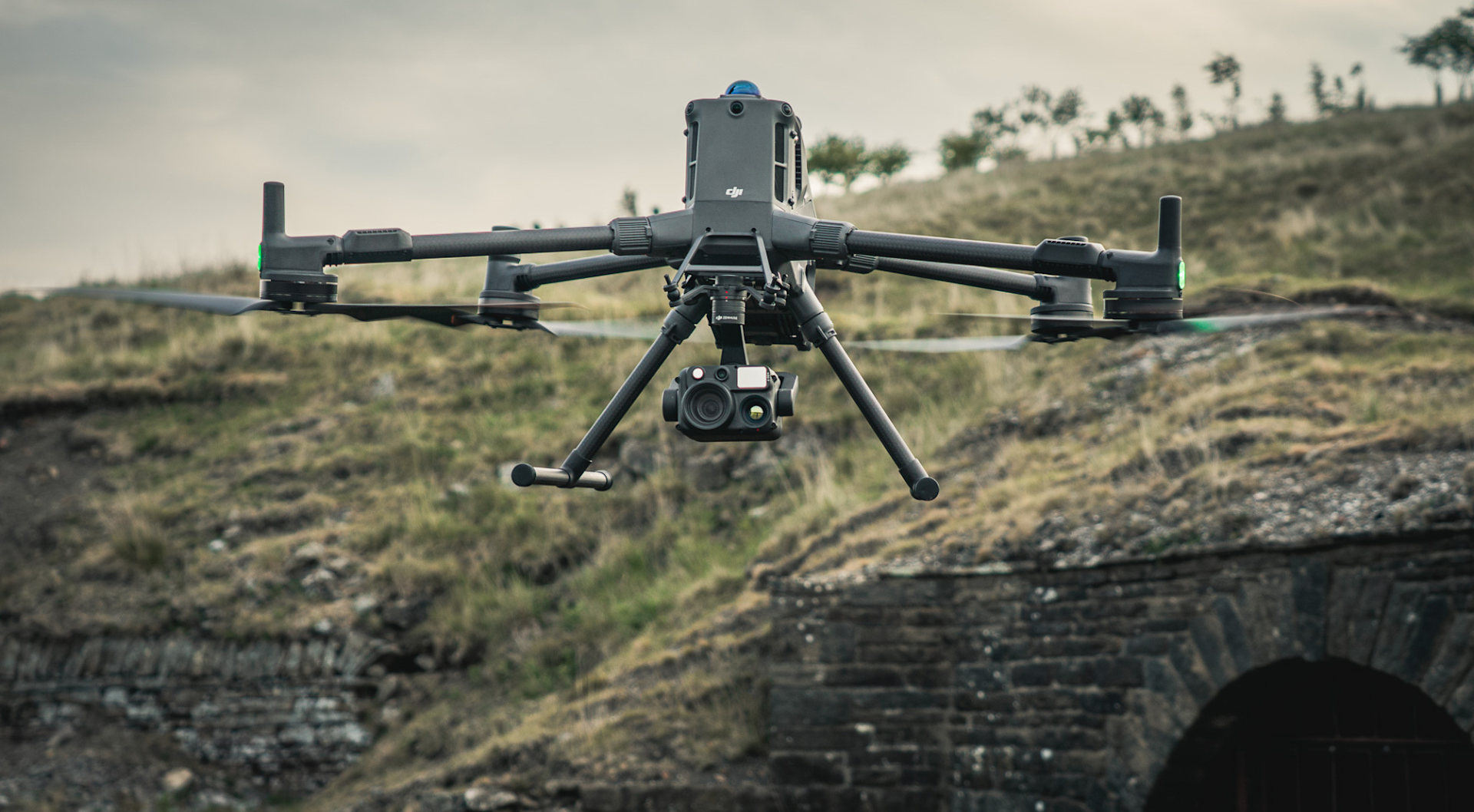
This IP55-rated workhorse also boasts an enhanced transmission system, can be deployed as part of an airborne relay workflow, and is engineered for ship-based take-off and landing.
It is compatible with DJI's most advanced payload suite - H30T, H30, L2, P1, V1, and S1 - as well as third-party solutions, and can conduct a range of intelligent and automated operations.
And it brings with it a range of new accessories, including the BS100 Multifunctional Battery Station, Manifold 3 onboard computer with 100 TOPS of processing power, and a new tethering system.
The M400 heralds an exciting new era for commercial drone operations, excelling in emergency response, power inspections, mapping, and AEC.
To support this, M400 has robust data security protocols and can be deployed in conjunction with the DJI FlightHub 2 On-premises solution.
Excited? Want to know more? Then keep reading this in-depth review.
And remember, heliguy™ offers end-to-end support on the DJI M400, including consultancy, training and regulatory assistance, surveying department, in-house repairs, and FlightHub 2 On-premsies support.
DJI M400 Key Specs
This table provides an overview of the DJI M400's key specifications.
Feature | Spec |
|---|---|
Takeoff weight | Without batteries: 5020±20g With batteries: 9740±40g |
Dimensions (L x W x H) | Unfolded: 980 x 760 x 480 mm (with landing gear) Folded: 490 x 490 x 480 mm (with landing gear and gimbal) |
Max payload weight | 6kg |
Max take-off weight | 15.8kg |
Max payload capacity | 7 |
Max horizontal speed | 25m/s |
Max flight time | 59 mins with payload |
Max wind speed resistance | 12m/s |
Operating temperature | -20°C to 50°C |
IP rating | IP55 |
Transmission | DJI O4 Enterprise Enhanced Video Transmission System 20km (CE) |
DJI M400: Top features
So, let's explore the key features of the DJI M400.
Versatile, heavy-lift platform
The DJI M400 is a versatile platform, designed for heavy-lift operations.
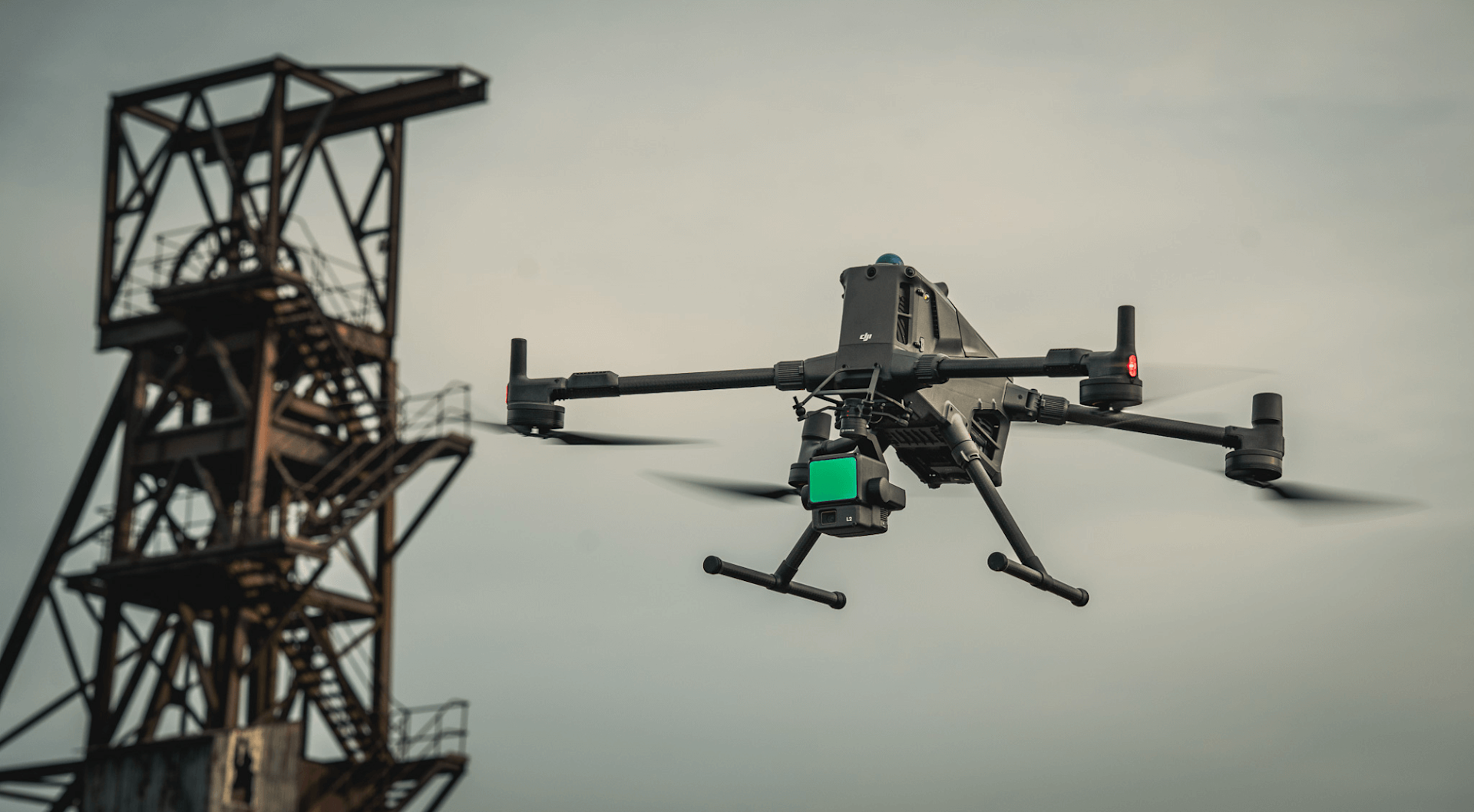
It has an impressive 6kg maximum payload capacity, and can support up to 7 payloads simultaneously.
Carry payloads underneath the drone in the single downward or dual downward configurations, or go further by adding a second gimbal connector on the underside for additional flexibility to carry up to three payloads.
Meanwhile, the E4 port supports expansion into 4 additional ports, allowing up to 7 payload connections in total.
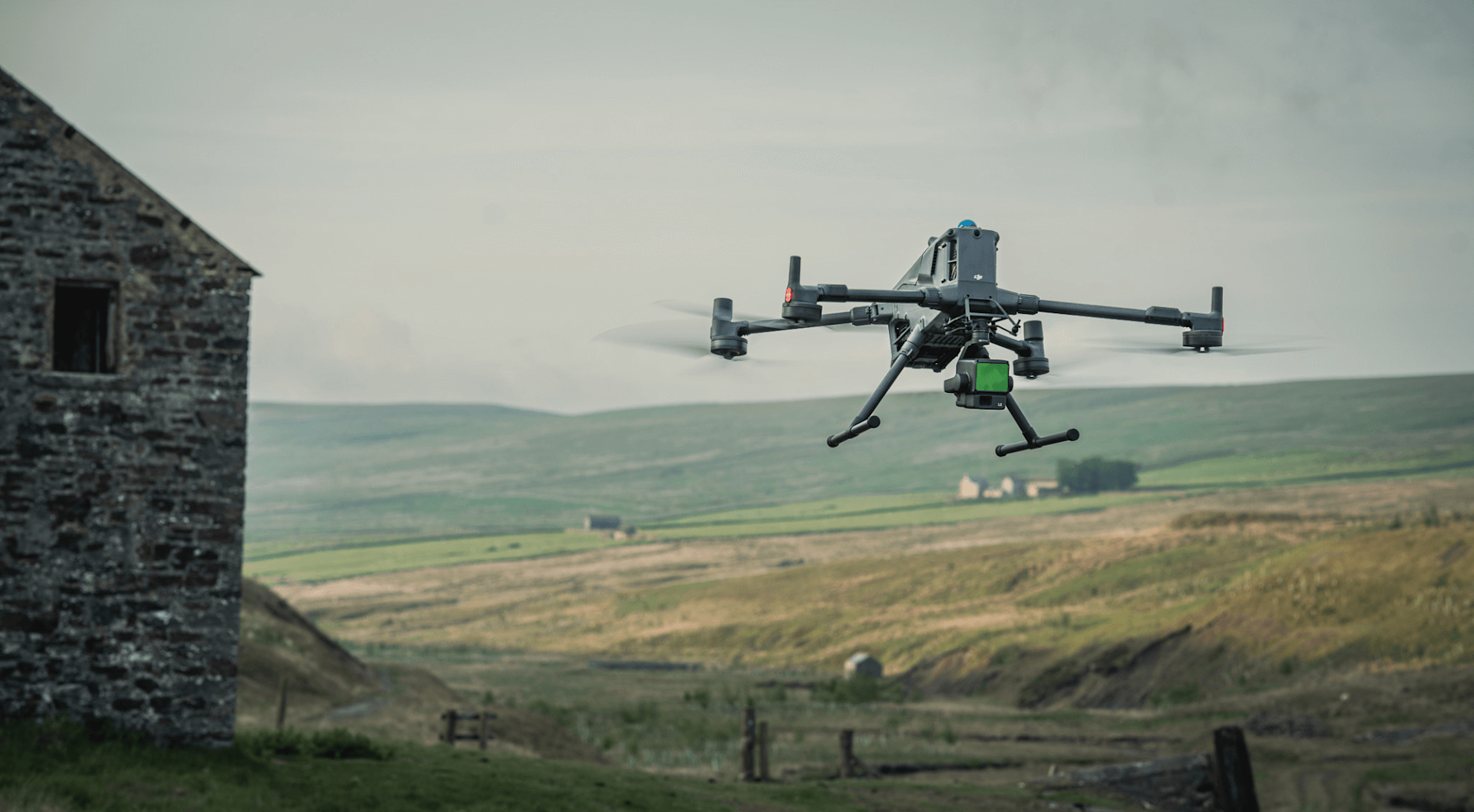
DJI M400 is compatible with a range of existing DJI payloads, such as the H30 Series, DJI Zenmuse L2, and DJI Zenmuse P1, as well as the DJI Zenmuse S1 searchlight and DJI Zenmuse V1 voice speaker.
Pairing the M400 with these payloads enables it to utilise features such as:
Power Line Follow with L2.
Smart 3D Capture with P1.
AI detection (visual) with H30 Series.
AI detection (thermal) with H30T.
The M400 does not support legacy DJI payloads, such as L1, and H20 Series. However, it is compatible with third-party PSDK payloads already developed for the M350 RTK aircraft (these need to be upgraded by contacting the corresponding manufacturer).
Operators can also deploy the new Manifold 3 - a high-performance embedded computer specially designed for the DJI Onboard SDK. We'll cover this in more detail later.
Extended flight time
The DJI M400 is a high-endurance aircraft, offering up to 59 minutes of maximum flight time
The table below shows indicative flight times when paired with different payload set-ups.
Payload | Maximum flight time |
|---|---|
H30T | 59 mins |
L2 | 59 mins |
P1 | 59 mins |
H30T + V1 | 53 mins |
H30T + S1 | 50 mins |
3kg payload | 44 mins |
6kg payload (max payload capacity) | 31 mins |
As well as endurance, the DJI M400 is also engineered for speed, achieving 25m/s (55.9mph).
The M400 also achieves a 10m/s max ascent speed, and 8m/s max descent speed.
Safety features
The DJI M400 is equipped with a range of onboard safety mechanisms. These include:
Horizontal rotating LiDAR, with a point frequency of 520,000 points per second, and an FOV of 360° (horizontal) and 58° (vertical).
Six-directional mmWave radar.
Full-colour fisheye vision system providing colour-assisted flight visuals for safe operations.
Upper LiDAR.
Downward 3D infrared sensing system.
This robust safety suite significantly enhances the drone's obstacle-sensing capability; enables the detection of thin and small power lines, even in low-light or night-time conditions; and provides stable performance in all conditions - even in rain, fog, or limited visibility.
In essence, they combine to provide the drone with 24/7 obstacle sensing - as demonstrated in the table below.
Feature | Safety benefit |
|---|---|
Rotating LiDAR | Detects small obstacles, such as power lines. Reliable positioning in GNSS-denied or weak-signal conditions. Excels at long-range detection. Stable performance under varying light conditions. |
mmWave Radar | Long detection range. Penetrates fog, rain, and snow - ideal for low-visibility operations. Quickly provides real-time distance and velocity data. |
Full-colour Fisheye | Longest detection range. Highly-sensitive object detection in daylight. Captures rich visual features, such as colour, shape, and texture for enhanced object recognition. Visual-positioning support in GNSS-denied conditions. |
It is an effective package of features that greatly enhances safety.
For instance, when flying at 25m/s, the drone can detect and avoid primary power lines (21.6mm) when flying directly towards them, while at 17m/s, it can detect and avoid primary (21.6mm) and secondary lines (12mm).
Operators can also benefit from the drone's brake and avoid obstacle avoidance mode.
On top of this, the M400 features a suite of additional safety features.
Safety feature | Description |
|---|---|
Arm-lock detection | If the arm sleeves are not properly locked, there will be a notification on the Pilot 2 app and the aircraft will not take-off. |
Battery lock sensor | If the flight battery is not properly installed, there will be a notification on the Piot 2 app and the aircraft will not take-off. |
Anti-collision beacon | The drone is equipped with two anti-collision beacons for improved visibility at night. |
Three-propeller emergency landing | If one of the motors fails, the aircraft can automatically enter three-propeller emergency landing mode. The aircraft will quickly spin and descend slowly. Please note: Take-off weight: ≤10.8kg; Fight height: ≥80m. |
AirSense ADS-B receiver | Gathers flight data sent automatically from nearby aircraft with ADS-B transmitters, analysing it to detect potential collision risks and alert users in advance through the Pilot 2 app. |
Enhanced Transmission
The DJI M400 is equipped with the O4 Enterprise Enhanced Transmission System, supporting up to 20km video transmission (CE, as well as SRRC and MIC), or a whopping 40km (FCC) for enhanced stability, better signal strength, and more reliable feeds.
The aircraft features a 10-antenna system and a high-gain phased array antenna system on the remote controller, and also supports the sub-2G frequency band video transmission. Please note that the sub2G band may vary by region.
Operators can also benefit from dual 4G enhanced transmission modules. When equipped with two DJI Cellular Dongle 2, the M400 can automatically switch to the best available network, providing a more stable signal in urban interference environments or remote regions.

On top of this, M400 can be used as part of an airborne relay system.
In this scenario, one M400 can serve as a relay drone, flying high to provide relay signals for another M400 operating at a greater distance.
This helps to significantly extend the transmission range: Ideal for search and rescue missions, or inspections in mountainous areas.
The workflow is as follows:
Complete the connection set-up between the mission drone and the relay drone on the ground.
Worker Drone: Displays relay drone's battery level, RTH time, transmission signal, and relative position.
Relay Drone: Displays its real-time distance and direction relative to the mission drone.
The table below provides an overview of which aircraft in the DJI Enterprise ecosystem can be deployed as worker and relay drones.
Worker drone | Worker drone | Worker drone | |
|---|---|---|---|
Relay Drone | M400 | M4 | M4D |
M400 | ✓ | ✓ | x |
M4D | Coming soon | ✓ | ✓ |
Robust performance in tough weather
The DJI M400 is a robust drone, built to handle tough weather conditions.
It has an IP55 protection rating, providing reliable flights in harsh environments, including heavy rain, dust, and fog. DJI states that it can handle rainfall of 100mm in 24 hours.
DJI M400 can operate reliably in extreme temperatures, flying in temperatures ranging from -20°C to 50°C.
It also has a wind-speed resistance of 12m/s.
Intelligent features
The DJI M400 is packed with intelligent features, enhancing safety and mission effectiveness.
These features are outlined in the table below - divided between Smart AR Projection, Intelligent Flight Routes, and AI Detection.
Smart AR Projection
Smart feature | Description |
|---|---|
AR Power Line | During tasks such as power-grid inspection, the obstacle sensing system detects frontal wire obstacles and displays easily-recognisable AR lines on the remote controller's screen. |
AR Map View | When operating in urban regions, the remote controller can display the names of buildings and landmarks in real-time, marking core roads with prominent lines. |
AR Flight Route | Real-time route preview is available for the drone during RTH, obstacle sensing, and FlyTo operations. |
Live Annotations | Without modelling, you can mark points to obtain subject locations, draw lines to measure distances between multiple points, and outline areas to calculate their size. Measurement results can be synced to DJI FlightHub 2. |
RC Signal Direction Prompt | When the connection between the aircraft and the remote controller is weak, a directional indicator appears on the compass at the bottom of the screen, showing the relative position of the aircraft and the remote controller. |
Intelligent Flight
Smart feature | Description |
|---|---|
Cruise | Pilot the drone in a specific direction without constantly pressing the control sticks, making long-distance flights or linear inspections easier. |
FlyTo | The drone can automatically adjust its flight path and speed based on the surrounding environment, allowing it to reach a designated location without manual adjustments. |
POI | Enables continuous observation and 3D modelling of buildings while orbiting a designated area, greatly enhancing the efficiency of fixed-point observation and modelling tasks. |
Real-time Terrain Follow | Enable this feature during manual and automated flight routes in any horizontal direction, ensuring stable relative height to the ground. During search and rescue operations, keep the size of ground subjects consistent on the screen, reducing the need for frequent zoom adjustments. Maintain a consistent GSD during mapping missions. |
Observed View | Record the ground area and the centre position of the screen observed by the camera, and display the observed view area on the map. Combined with the cruise control function, the cognitive load of the search and rescue pilot can be greatly reduced. |
Smart Track | For precise subject positioning and automatic zoom adjustments. Allows you to switch subjects easily. It can automatically reacquire a subject, even if obscured briefly. |
AI Detection
Smart feature | Description |
|---|---|
Visible Detection (with DJI Zenmuse H30 Series) | AI models for people, vehicles, boats. Supports alarm and counting. Adjustable confidence level. Supports third-party models. |
Thermal Detection | AI models for people, vehicles, and boars. Supports moving people detection. Adjustable confidence level. |
Flight Routes
Smart feature | Description |
|---|---|
Slope and Geometric Route | Matrice 400 supports the planning and execution of slope and geometric routes via DJI Pilot 2 or DJI FlightHub 2. This is ideal for surveying building facades, slopes, or other inclined surfaces. |
Smart 3D Capture (with DJI Zenmuse P1) | Create a rough model on the RC, which is then used to create an automated Smart 3D Capture Route. |
Take-off and land on ships
DJI M400 supports ship-based auto-landing.
This enables the drone to recognise custom-landing markers on the vessel's deck, allowing for dynamic landings - even on moving ships.
This expands operational coverage, reduces launch and recovery risks, and unlocks new possibilities for offshore missions.
It helps meet an increase in drone demand at sea, from use cases such as maritime patrols and offshore wind-turbine inspections.
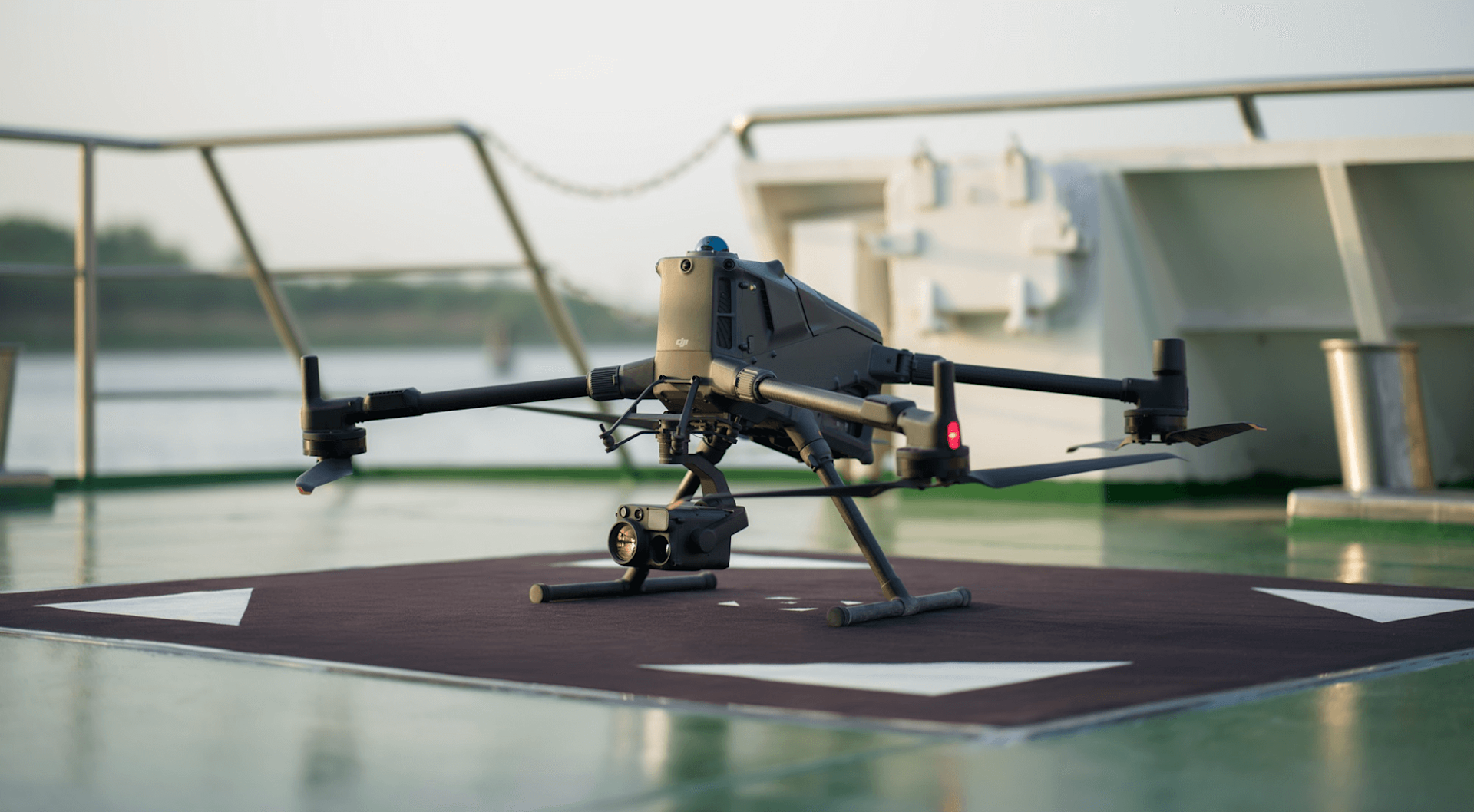
DJI M400 accessories
DJI M400 is compatible with a vast accessory ecosystem, such as the DJI RC Plus 2 Enterprise Enhanced Version, the TB100 Intelligent Flight Battery, BS100 Multifunctional Battery Station, Airport Transport Case, the new TB100C tethered drone battery, and Manifold 3.
We take a look at each of these accessories below.
DJI RC Plus 2 Enterprise Enhanced Version
7.02-inch LCD touchscreen.
1400 nits max brightness.
High-gain antenna array.
IP54 protection rating.
Supports button backlight.
3.8 hours of built-in battery life.
7 hours total operation time with WB37 external battery.
Optional 4G enhancement module can be mounted to the RC, providing stable transmission combined with the drone's dual 4G modules.
Latest sub-2G antenna enables the 1.4 GHz and 900 MHz transmission band.
Antenna status indicator shows real-time working state.
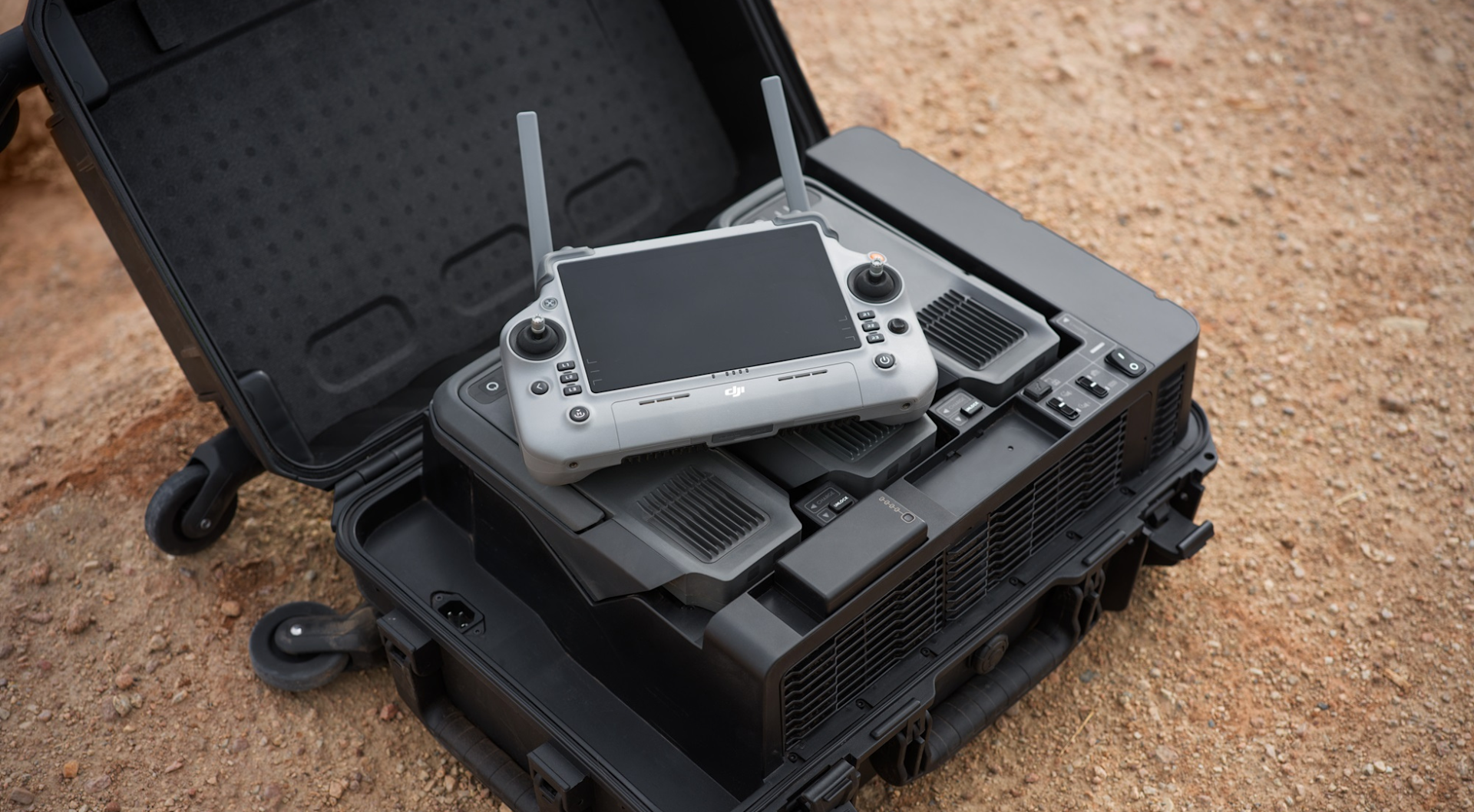
The difference between the DJI RC Plus 2 Enterprise and DJI RC Plus 2 Enterprise Enhanced is that it is equipped with the DJI RC Plus 2 Sub-2G Transmission Module, supporting Sub-2G communication bands.
The DJI RC Plus 2 Enterprise Enhanced remote controller supports the DJI Matrice 4 Series and Matrice 4D Series, but they must be upgraded to version 14.1 to support pairing. It does not support the Mavic 3 Enterprise series, Matrice 3D Enterprise series or Matrice 350 RTK. None of these drones support the sub2G communication frequency band.
TB100 Intelligent Flight Battery
High-capacity battery (20,254 mAh).
Top-insert design allows for quick insertion and removal.
Li-ion 13S.
977 Wh energy.
400 cycles.
Hot-swapping is also supported when pairing the TB100 with the M400.
The M400 features built-in capacitors to maintain power for up to 45 seconds during battery replacement for core modules, enabling a rapid restart.
Upon restart, the drone retains satellite connection, allowing missions to resume quickly without reacquiring GPS.

BS100 Multifunctional Battery Station
Supports up to 3 x TB100 batteries and 2 x WB37 batteries.
Charge level mode: Standby - 90%; Standard - 100%.
Speed mode: Rapid mode - 0 to 100% in 45 minutes @ 220V, 70 minutes @ 110V; Quiet mode - 0 to 100% in 110 minutes @ 220V and 110V.
Connect to the remote controller for battery station management.
Supports full battery status monitoring.
One-tap setting for auto-discharge and firmware updates.
Aircraft Transport Case
Dimensions: 779 x 363 x 528mm.
Equipped with omnidirectional wheels on the bottom.
Includes propeller holder foam.
The case is optimised for maximum space, and can store:
M400 aircraft with front and rear propeller holders.
1 remote controller.
Up to 2 x TB100 flight batteries.
1 x payload (ie H30 Series, L2
1 x Zenmuse S1 spotlight
1 x Zenmuse V1 loudspeaker.
2 x WB37 batteries.
This includes the TB100 battery with up to 400 charge cycles, and the BS100 Battery Station with support for a 3-battery charging cycle.
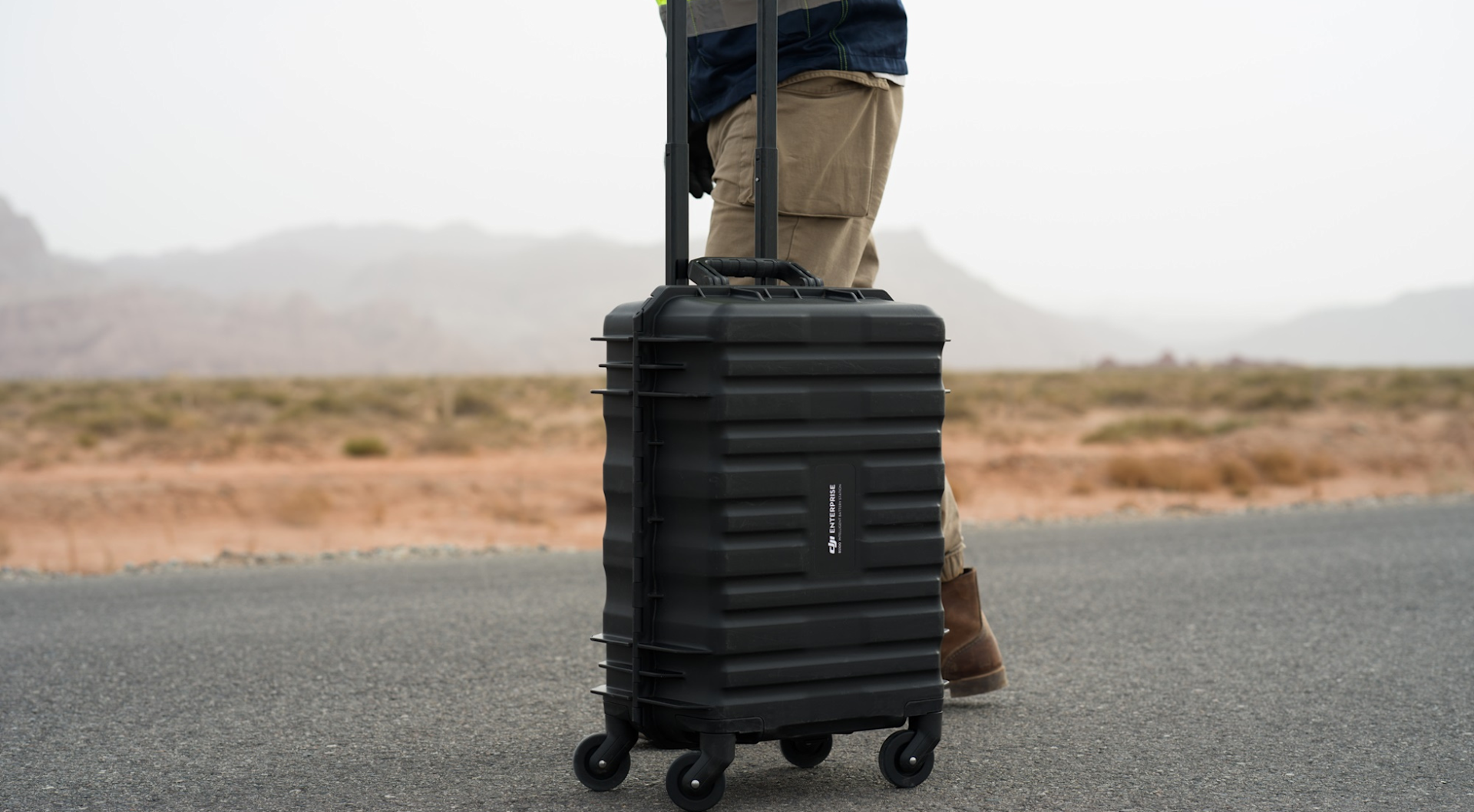
Manifold 3
High-performance on-board computing unit.
Delivers up to 100 TOPS of computing power, supporting parallel acceleration via GPU and DLA cores for model inference and edge AI tasks.
Weighs 120g.
Fully supports and is compatible with PSDK V3, for seamless integration with underlying communication protocols to access flight platform sensor data efficiently.
Third-party developers can utilise the computing power of Manifold 3 and, through integration with PSDK, build high-performance end-to-end automatic solutions.
TB100C Tethered Battery
Tethered battery and third-party ecosystem power supply provide continuous power for the drone.
Enables long-duration hovering or mission execution, significantly improving operational time and efficiency.
20,254 mAh capacity.
Supports 400 cycles.
Supports in-box charging with BS100 battery station.
DJI M400 software compatibility
DJI M400 is compatible with DJI's software suite, such as DJI Pilot 2, FlightHub 2, DJI Terra, and DJI Modify.
DJI M400 data security
In this day and age, data security is a vital consideration for enterprise drone operators and UAV programmes.
With this in mind, DJI M400 has a robust data security suite to protect user data - including media encryption, local storage, log clearing, offline firmware updates, and offline maps.
The M400 can also be used in conjunction with DJI FlightHub 2 On-premises, which provides an extra layer of security. The On-premise version of FlightHub 2 enables users to deploy the platform on a server location of their choice; keep flight logs, maps, photos, and videos within your organisation's infrastructure; and manage how data is stored, backed up, and accessed.
heliguy™ is a DJI-accredited FlightHub 2 On-premises provider and can help your organisation get started with this data security solution. Contact us for more information.
Summary
With its heavy-lift performance, long flight time, and obstacle-avoidance capabilities, the DJI M400 is a ground-breaking commercial drone that will further transform operations.
DJI is known for its innovation, and the M400 is further proof of this and heralds a new and exciting chapter for the drone industry.
